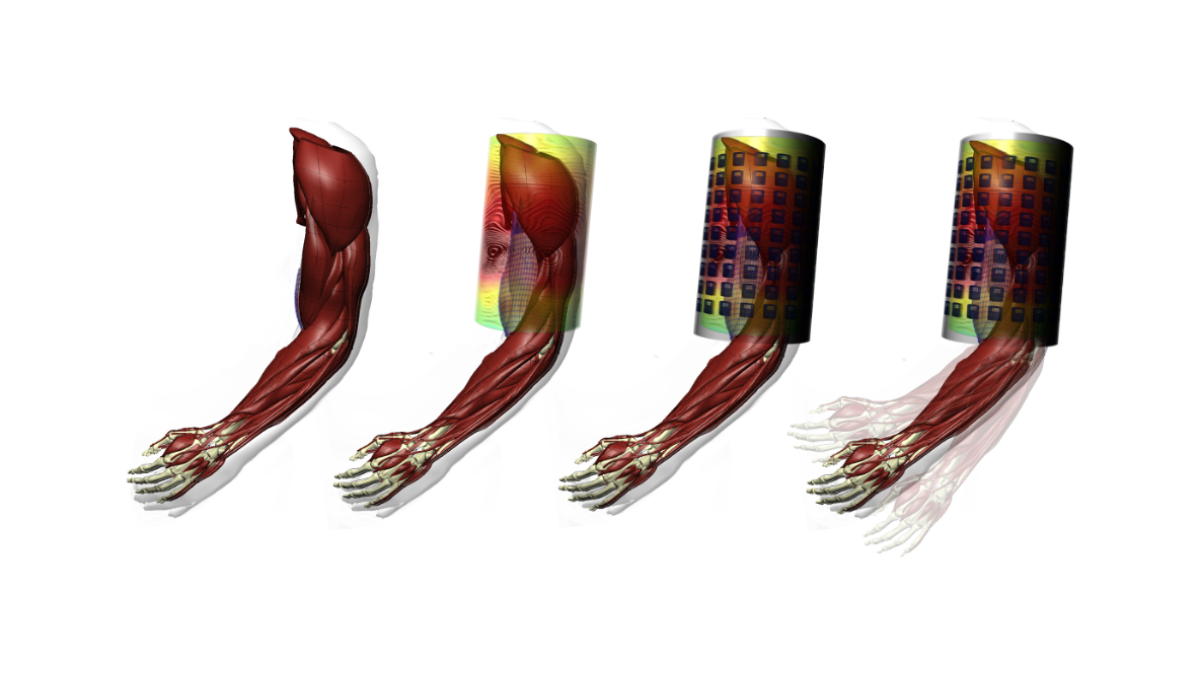Being able to decode neural signals that control skeletal muscles with high accuracy will enable scientific breakthroughs in diagnostics and treatment, including early detection of neurodegenerative diseases, optimising personalised treatment or gene therapy, and assistive technologies like neuroprostheses. This breakthrough will require technology that is able to record signals from skeletal muscles in sufficient detail to allow the morpho-functional state of the neuromuscular system to be extracted. No existing technology can do this. Measuring the magnetic field induced by the flow of electrical charges in skeletal muscles, known as Magneto-myography (MMG), is expected to be the game-changing technology because magnetic fields are not attenuated by biological tissue. However, the extremely small magnetic fields involved require extremely sensitive magnetometers. The only promising option is novel quantum sensors, such as optically pumped magnetometers (OPMs), because they are small, modular, and can operate outside of specialised rooms. Our vision is to use this technology and our expertise in computational neuromechanics to decode, for the first time, neuromuscular control of skeletal muscles based on in vivo, high-density MMG data. For this purpose, we will design the first high-density MMG prototypes with up to 96 OPMs and develop custom calibration techniques. We will record magnetic fields induced by contracting skeletal muscles at the highest resolution ever measured. Such data, combined with the advanced computational musculoskeletal system models, will allow us to derive robust and reliable source localisation and separation algorithms. This will provide us with unique input for subject-specific neuromuscular models. We will demonstrate the superiority of the data over existing techniques with two applications; signs of ageing and neuromuscular disorders and show that it is possible to transfer these methodologies to clinical applications.
MMG and EMG are complementary modalities for recording the electrical activity of muscles. In contrast to EMG, however, MMG has not been well explored. With the qMOTION project, we want to investigate whether MMG can provide new insights into neuromuscular physiology that are not accessible by EMG. For this purpose, it is essential to measure MMG and EMG simultaneously at the highest resolution and quality currently possible. This requires the development of special non-magnetic EMG electrodes. Ultimately, we want to record benchmark data sets that compare the performance of MMG and EMG for decoding human motion.
Simulations provide insights into MMG signals that would not be easily possible experimentally. Most importantly, simulations can precisely define muscular activation, tissue properties and measurement accuracy. These factors usually lead to significant uncertainties in experimental data. In addition, labeled data sets can be generated to test and benchmark signal processing algorithms, such as motor unit decomposition (see Klotz et al. 2023) or inverse modelling-based imaging. In qMOTION, we develop biophysical models (e.g. Klotz et al. 2022) that mechanistically describe the generation of MMG signals considering multiple time and length scales.
OPM-MMG is a novel methodology and its limitations are not-well explored. The quantification of data uncertainty during benchmark experiments and well-calibrated sensors are essential for accuracy of MMG-based biomedical applications. To address this, a tool called the "Phantom Fiber" is being developed to simulate the magnetic field of a muscle fiber during contraction to calibrate and verify sensor setups containing multiple OPMs. The Phantom Fiber has two main parts: a carrier unit and a controller. The carrier acts like a muscle fiber, carrying an action potential propagation, while the controller tunes conduction velocity and density.
The Phantom Fiber and OPM experiments are being done in a MU-Metal Chamber at MEG Center, Universitätsklinikum Tübingen. The Phantom Fiber Carrier is placed in a tailored setup, providing different positioning according to the OPMs. The Phantom Fiber Controller is put out of the chamber alongside the OPM recording system. One master computer is being used to control the experiment, data storage, and data analysis.
All research data acquired within qMOTION is available through the University of Stuttgart's data repository DaRUS:
| Funding Body | European Research Council (ERC) |
| Funding Programme | Horizon Europe |
| Funding Call | ERC Advanced Grants 2021 |
| Acronym | qMOTION |
| Full Title | Simulation-enhanced Highdensity Magneto-myographic Quantum Sensor Systems for Decoding Neuromuscular Control During Motion |
| Awarded Funding | 3.5 Million Euros for 5 years |
| Funding ID | ERC-AdG 2021 #101055186 |
| Starting Date | September 1, 2022 |
Publications
- 1.Schmid, L., Klotz, T., Röhrle, O., Powers, R. K., Negro, F., & Yavuz, U. Ş. (2024). Postinhibitory excitation in motoneurons can be facilitated by hyperpolarization-activated inward currents: A simulation study. PLOS Computational Biology, 20, Article 1. https://doi.org/10.1371/journal.pcbi.1011487
- 2.Zhang, C., Zhang, J., Widmann, M., Benke, M., Kübler, M., Dasari, D., Klotz, T., Gizzi, L., Röhrle, O., Brenner, P., & Wrachtrup, J. (2023). Optimizing NV magnetometry for Magnetoneurography and Magnetomyography applications. Frontiers in Neuroscience, 16. https://doi.org/10.3389/fnins.2022.1034391
- 3.Klotz, T., Lehmann, L., Negro, F., & Röhrle, O. (2023). High-density magnetomyography is superior to high-density surface electromyography for motor unit decomposition: a simulation study. Journal of Neural Engineering. https://doi.org/10.1088/1741-2552/ace7f7
- 4.Klotz, T., Gizzi, L., & Röhrle, O. (2022). Investigating the spatial resolution of EMG and MMG based on a systemic multi-scale model. Biomechanics and Modeling in Mechanobiology, 21, 983–997. https://doi.org/10.1007/s10237-022-01572-7
Related Reserach Directions
Vera Tahedl
Administrative Associate (Röhrle group)

Sina Schorndorfer
Project Coordinator










